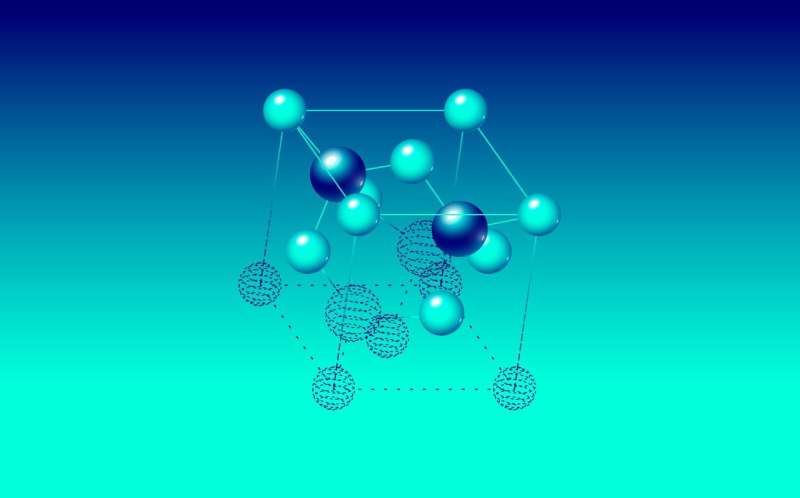Chemists teach computer program to model forces between atoms accurately

A team of researchers from MIPT, Skoltech, and Dukhov Research Institute of Automatics, led by Artem Oganov, used a machine learning technique to model the behavior of aluminum and uranium in the liquid and crystalline phases at various temperatures and pressures. Such simulations of chemical systems can predict their properties under a range of conditions before experiments are performed, enabling further work with only the most promising materials. The research findings were published in the journal Scientific Reports.
Computer chemistry
Rapid advances in science over the last 100 years have resulted in the discovery of an astonishing number of organic and inorganic compounds, protein and lipid structures, and chemical reactions. But with all these new structures and molecules, an increasing amount of time is necessary to study their makeup, biochemical and physical properties, and to test the models of their behavior under various conditions and their possible interactions with other compounds. Such research can now be accelerated using computer modeling.
The force field approach is currently the dominant modeling technique. It makes use of a set of parameters describing a given biochemical system. These include bond lengths, angles and charges, among others. However, this technique is unable to reproduce the quantum mechanical forces at play in molecules accurately. Accurate quantum mechanical calculations are time consuming. Additionally, they only enable predictions of the behavior of samples that are at best several hundred atoms large.
Machine learning approaches to molecular modeling are of great interest to chemists. They enable models that are trained on relatively small data sets obtained by means of quantum mechanical calculations. Such models can then replace quantum mechanical calculations, because they are just as accurate and require about 1,000 times less computing power.
Progress made by machine learning tools modeling interactions between atoms
The researchers used machine learning to model the interactions between atoms in crystalline and liquid aluminum and uranium. Aluminum is a well-studied metal whose physical and chemical properties are known to scientists. Uranium, by contrast, was chosen because there are conflicting published data on its physical and chemical properties, which the researchers sought to define more accurately.
The paper details their study of such material properties as the phonon density of states, entropy, and the melting temperature of aluminum.
"The magnitudes of interatomic forces in crystals can be used to predict how atoms of the same element will behave under different temperatures and in a different phase," says Ivan Kruglov from the Computational Materials Design Laboratory at MIPT. "By the same token, you can use the data on the properties of a liquid to find out how the atoms will behave in a crystal. This means that by finding out more about the crystal structure of uranium, we can eventually reconstruct the entire phase diagram for this metal. Phase diagrams are charts indicating the properties of elements as a function of pressure and temperature. They are used to determine the limits to the applicability of a given element."
To make sure that the data yielded by computer simulations is valid, they are compared to experimental results. The method used by the researchers was in good agreement with prior experiments. The information obtained with the approach based on machine learning had a lower error rate, compared to the modeling techniques using force fields.
In this study, the authors improve on their 2016 results in terms of the speed and accuracy of atomic system modeling using machine learning.
More information: Scientific Reports (2017). DOI: 10.1038/s41598-017-08455-3 , www.nature.com/articles/s41598-017-08455-3
Journal information: Scientific Reports
Provided by Moscow Institute of Physics and Technology




















